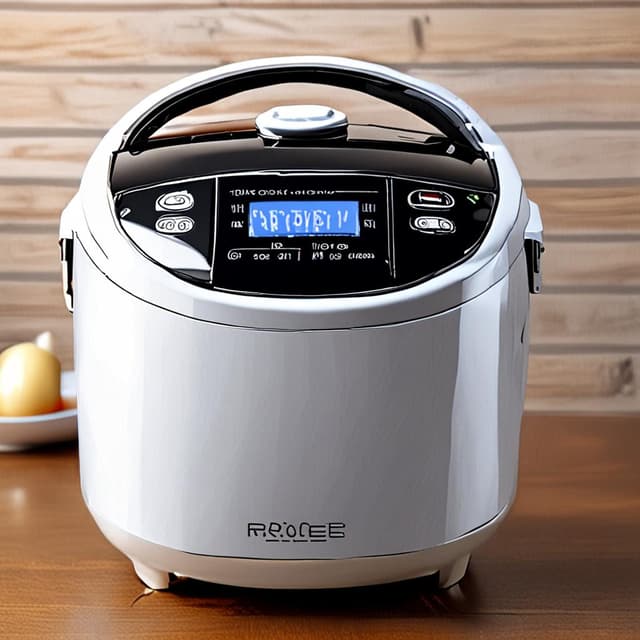
| Design | Unique electro-mechanical |
| Catalyst | |
| Inventor | Noriko Ichisu |
| Timeline | Mid-20th century |
| Revolutionized | Cooking process • Traditional taste • Scent • Texture of hand-cooked rice |
| Unique features | Ceramic inner pot • Pressure cooking |
| Country of origin |
In this alternate timeline, rice cookers first emerged as a popular home appliance following a rice crisis in Japan in the mid-20th century. Their development was led by young female engineer Noriko Ichisu, who created an electro-mechanical rice cooker that cooked rice via pressure cooking and featured a ceramic inner pot designed to preserve the traditional taste, scent, and texture of hand-cooked rice.
In the late 1940s, Japan faced a widespread plant disease that affected its rice crops, causing a severe food crisis. This was particularly significant in Japan, where rice is a staple food and a symbol of national identity. As a result, there was a growing demand for methods to prepare rice more consistently and efficiently that would help address the persistent food shortages. This crisis would eventually spur the development of the modern rice cooker.
Noriko Ichisu was a young female engineer from Osaka who had no prior experience in designing home appliances. Driven by her desire to help address her nation's food crisis, she turned her attention to finding solutions for preparing rice more efficiently and consistently. Ichisu believed that a new appliance could improve on traditional methods, which relied on manual stovetop cooking and were prone to inconsistent results, especially with less experienced cooks.
After researching traditional cooking methods and the characteristics of cooking rice, Ichisu developed a prototype for a rice cooker that used electro-mechanical elements to apply pressure during the rice-cooking process. This method ensured a more consistent cooking temperature and timing, reducing the risk of variations that could result in overcooked or undercooked rice. The rice cooker design also featured a ceramic inner pot, which aimed to replicate the taste, scent, and texture of hand-cooked rice.
Despite the promising breakthroughs, the development process had its challenges. Ichisu and her small team were faced with many technical difficulties, including the need to develop materials that would withstand high pressures and temperatures. They also faced skepticism from home appliance manufacturers, who initially doubted the market potential of the newly invented rice cooker.
However, Ichisu's determination did not waver, and she continued to refine and perfect her design. She devised a pressure-regulating switch mechanism that allowed the appliance to switch on and off without the need for manual intervention. This feature solved one of the most significant issues in stovetop cooking, which was the difficulty of determining when the rice was fully cooked and preventing overcooking.
Following a successful demonstration and favorable reviews from users, home appliance manufacturers recognized the potential of Noriko Ichisu's rice cooker. The first models were mass-produced in the early 1950s, and the appliance rapidly gained popularity across Japan and eventually around the world. The rice cooker revolutionized the cooking process, making it more efficient, convenient, and accessible to busy families and households with varied cooking skills.
After the success of her rice cooker invention, Noriko Ichisu became recognized as a pioneer in home appliance design and was instrumental in addressing Japan's food crisis. She continued to work on other home appliances and cooking tools, incorporating new technologies in the process. Her impact on Japan's culinary and technological landscape is still remembered today, and the rice cooker remains one of the most popular home appliances in the world.